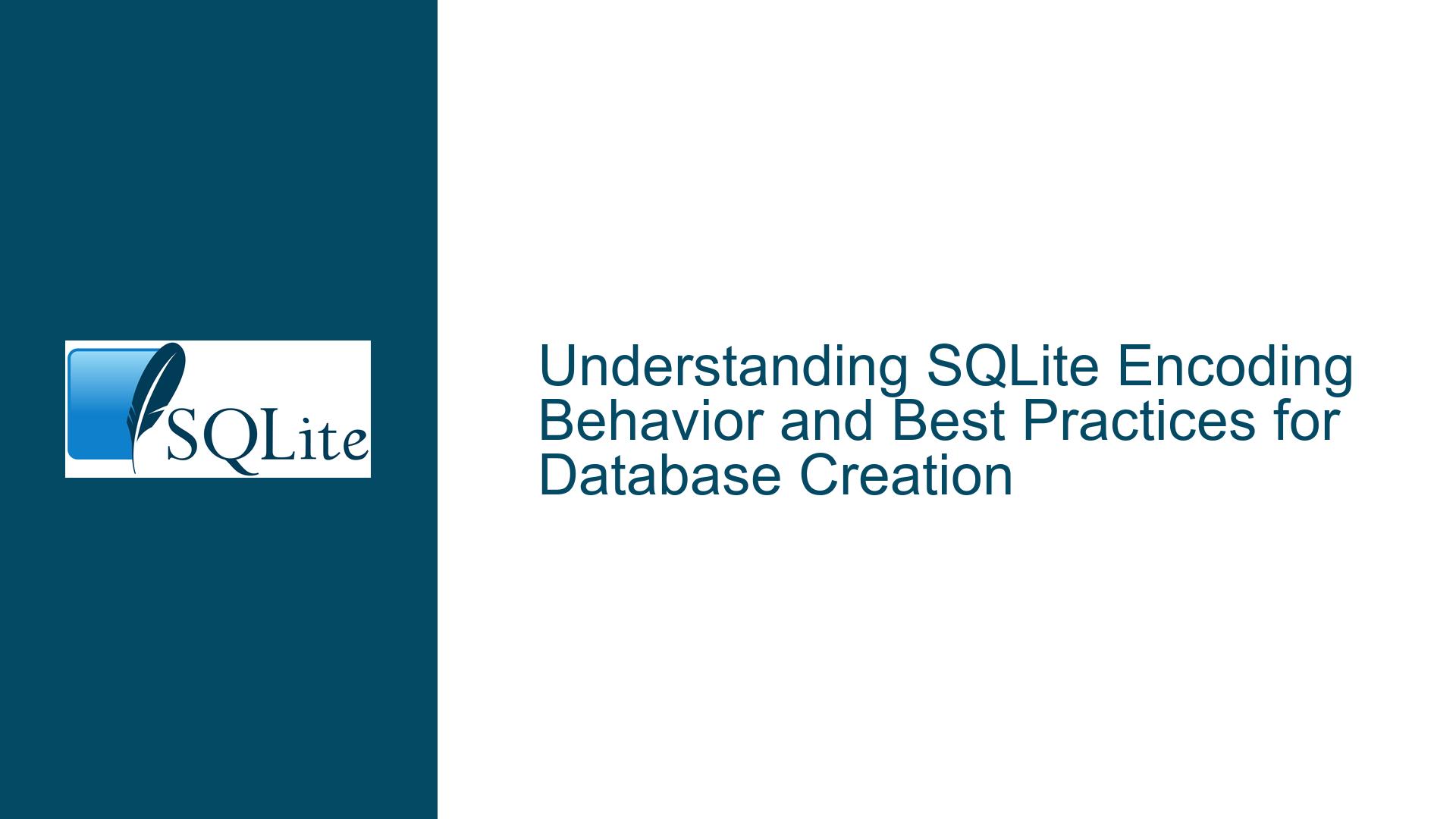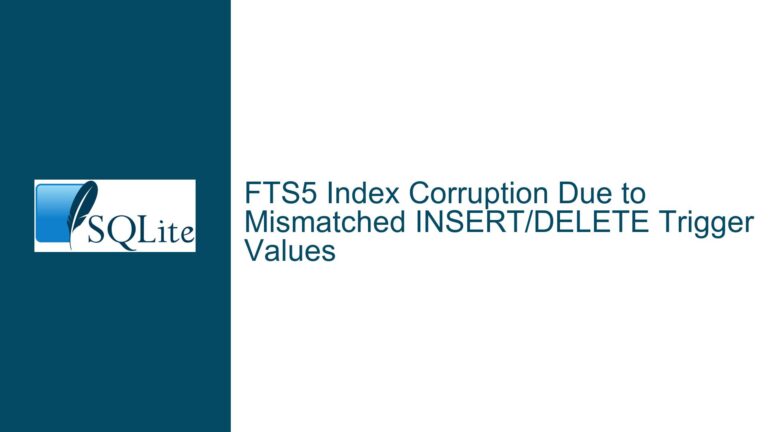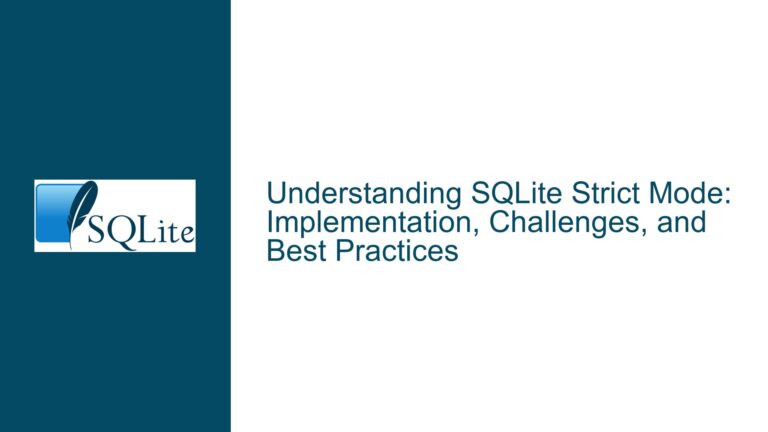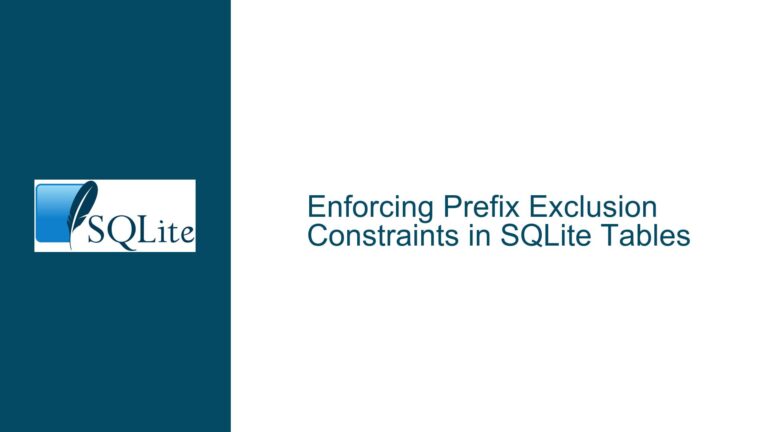SQLite Encoding Behavior and Best Practices for Database Creation
SQLite Encoding Behavior During Database Creation
When creating a new SQLite database, one of the critical decisions is setting the text encoding. The encoding determines how text data is stored and interpreted within the database. SQLite supports several encodings, including UTF-8, UTF-16le (little-endian), and UTF-16be (big-endian). The encoding is set using the PRAGMA encoding statement, which must be executed before any content is added to the database. However, the behavior of this pragma and its interaction with the database creation process can be nuanced and is often misunderstood.
The core issue revolves around the timing and persistence of the encoding setting. Specifically, the encoding must be set before any data is written to the database. If the encoding is set after data has been written, the setting will not take effect, and the database will retain its original encoding. This behavior is by design but is not always clearly documented, leading to confusion among developers.
The confusion is compounded by the fact that the SQLite shell (sqlite3) and the C API handle database creation and encoding differently. When using the SQLite shell, the encoding can be set immediately after creating the database file, even though the file itself is created before the encoding is specified. This behavior works because the encoding is only finalized when the first piece of data is written to the database. However, this is not explicitly stated in the documentation, leading to uncertainty about whether this behavior is guaranteed to remain consistent in future versions of SQLite.
Interrupted Write Operations and Encoding Persistence
One of the key factors influencing the encoding behavior is the state of the database file. When a new database is created, it is initially empty, meaning it contains no tables, indexes, or data. At this stage, the encoding can be set using the PRAGMA encoding statement. However, once any data is written to the database, the encoding is "locked in" and cannot be changed without first emptying the database.
This behavior is tied to the way SQLite manages database pages. When a database is created, the first page is written to disk, containing the database header and an empty sqlite_master table. This initial page write is what finalizes the encoding. If the encoding is set after this initial page is written, the setting will not persist across database sessions. This is why the encoding must be set before any data is written, including the creation of tables or indexes.
The presence of free pages in the database freelist can also affect the ability to change the encoding. Even if all tables and indexes are dropped, and a VACUUM operation is performed to remove free pages, the database is not considered "empty" if the freelist still contains pages. This is because the freelist pages are part of the database structure and are treated as content. Therefore, the encoding cannot be changed until the database is completely empty, including the freelist.
Implementing PRAGMA Encoding and Database Backup Strategies
To ensure that the desired encoding is applied correctly, developers must follow a specific sequence of steps when creating a new database. First, the database file must be created and opened. Next, the PRAGMA encoding statement must be executed before any data is written to the database. Finally, the database can be populated with tables, indexes, and data. This sequence ensures that the encoding is set correctly and will persist across database sessions.
If the encoding needs to be changed after the database has been populated, the only option is to export the data, create a new database with the desired encoding, and then import the data into the new database. This process can be automated using scripts, but it is important to ensure that the data is exported and imported correctly to avoid data corruption or loss.
When using the SQLite shell, the following steps can be used to create a new database with a specific encoding:
- Create the database file and open it using the SQLite shell.
- Execute the
PRAGMA encodingstatement to set the desired encoding. - Create tables, indexes, and other database objects.
- Populate the database with data.
For example, the following commands can be used to create a new database with UTF-16le encoding:
sqlite3 new_database.sqlite
PRAGMA encoding = 'UTF-16le';
CREATE TABLE example_table (id INTEGER PRIMARY KEY, name TEXT);
INSERT INTO example_table (name) VALUES ('Sample Data');
If the encoding needs to be changed after the database has been populated, the following steps can be used:
- Export the data from the existing database to a CSV file or another intermediate format.
- Create a new database with the desired encoding.
- Import the data into the new database.
For example, the following commands can be used to export data from an existing database and import it into a new database with a different encoding:
# Export data from the existing database
sqlite3 old_database.sqlite
.mode csv
.output data.csv
SELECT * FROM example_table;
.exit
# Create a new database with the desired encoding
sqlite3 new_database.sqlite
PRAGMA encoding = 'UTF-16le';
CREATE TABLE example_table (id INTEGER PRIMARY KEY, name TEXT);
# Import data into the new database
.mode csv
.import data.csv example_table
It is also important to note that SQLite does not support attaching databases with different encodings. If you need to combine data from databases with different encodings, you must export the data from one database and import it into the other, as described above.
In conclusion, understanding the behavior of the PRAGMA encoding statement and the factors that influence encoding persistence is crucial for developers working with SQLite. By following the correct sequence of steps and using appropriate backup and migration strategies, developers can ensure that their databases are created with the desired encoding and that data is preserved correctly when changing encodings.






